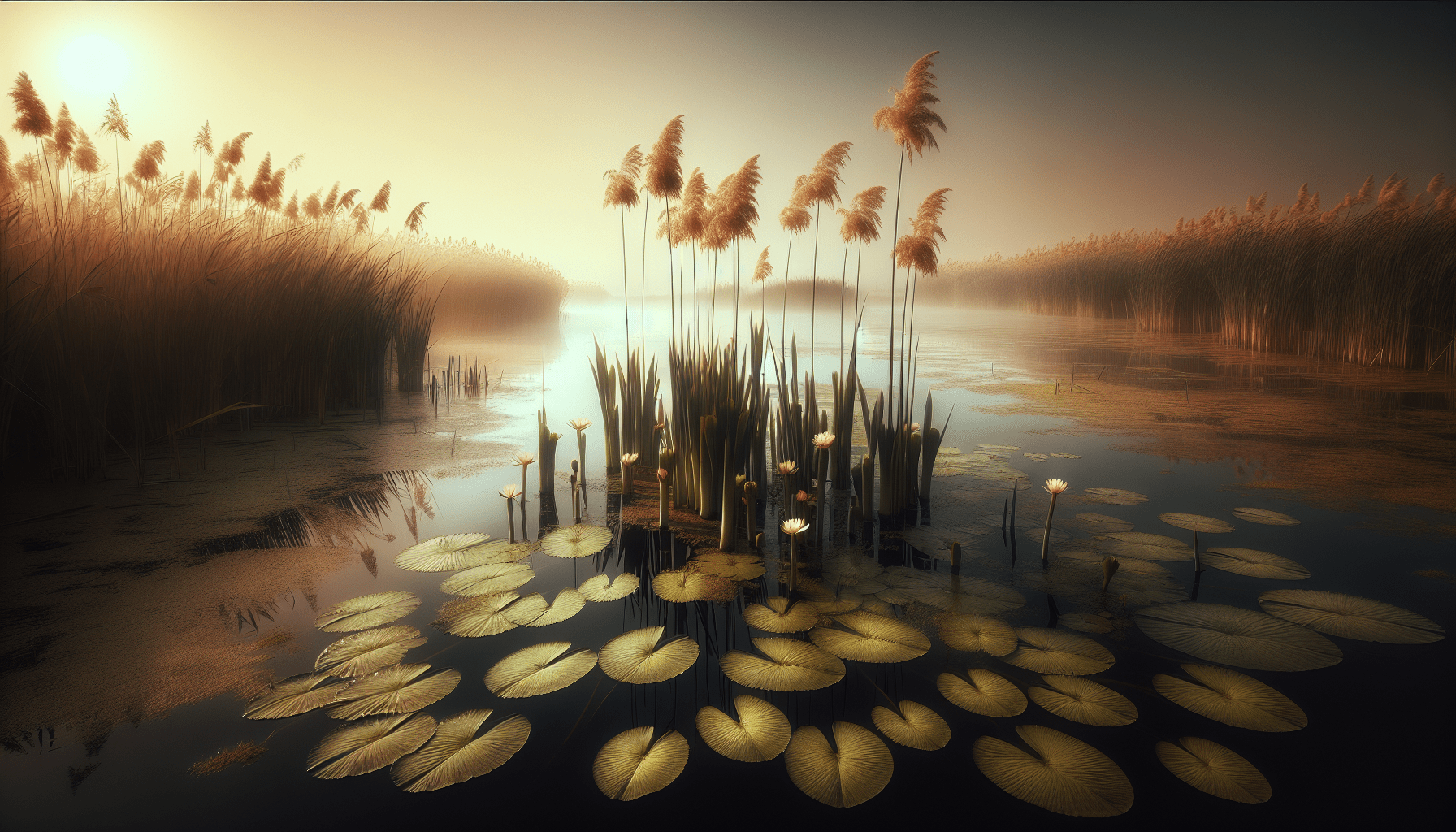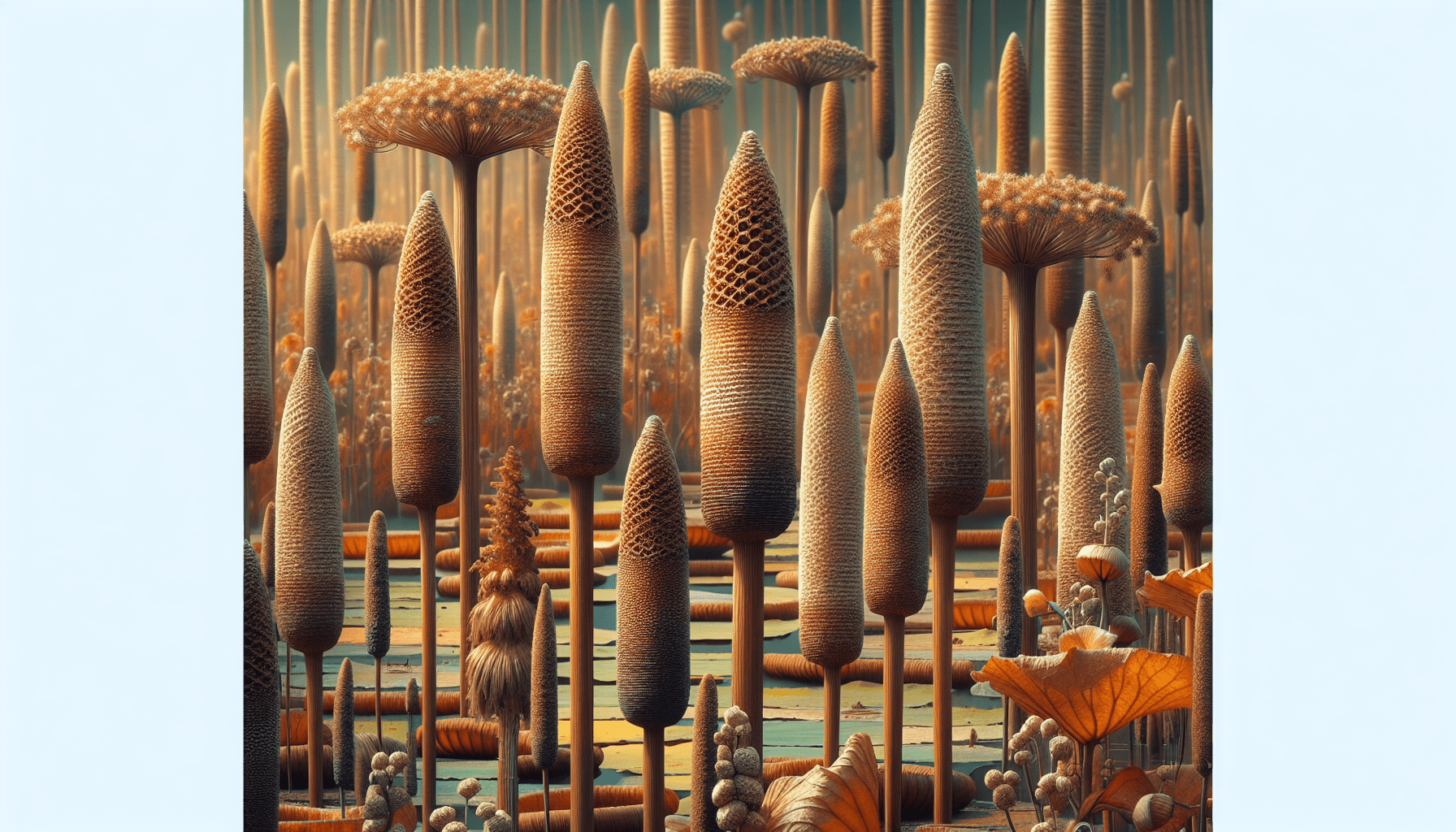In the realm of aquatic botany, it’s likely you’re not overly familiar with a species by the name of Typha Varsobica, known more commonly as an aquatic weed. This rather nuanced member of the plant kingdom, native to various regions across the globe, has been both a friend and foe to many ecosystems–albeit little understood in its entirety by the lay person. The ensuing discussion invites you to broaden your comprehension on this obscure yet fascinating plant, as it sheds light not only on its biological composition and particularities but also on its effects, interactions, and overall role in different aquatic habitats.

Scientific Classification of Typha Varsobica
Typha varsobica is a species within the Typha genus, which broadly houses around 30 species of cattail plants that are also commonly regarded as reed mace, bulrush, or reedmace. Belonging within the cattail family, Typhaceae, Typha varsobica’s classification unfolds as the following hierarchical order:
Kingdom
Typha varsobica falls under the category of Plantae, the kingdom that encompasses all multi-cellular, eukaryotic life forms characterized by stationary primary growth, photosynthetic behavior, and cell walls made up of cellulose.
Phylum
Typha varsobica is categorised under the division of Tracheophyta, more commonly known as vascular plants, which possess a specialized transporting system composed of xylem and phloem tissues.
Class
The class to which Typha varsobica belongs to is Monocots, a group predominantly defined by their seeds possessing a single embryonic leaf or cotyledon.
Order
Typha varsobica finds itself classified in the order Typhales, marsh or aquatic plants equipped with complex systems for transportation of water and nutrients.
Family
It belongs to the Typhaceae family, a group constituted of robust perennial herbs like the cattail.
Genus
It finds its place in the Typha genus, known for its cylindrical, sausage-shaped flower clusters that often resemble hotdogs or cigars.
Species
Lastly, Typha varsobica is a distinct species within the Typha genus, identified by its specific set of characteristics that differentiate it from other members of the genus.
Physical Description of Typha Varsobica
Understanding Typha varsobica through a visual lens offers a comprehensive insight into its structural well-being and its potential proliferation in aquatic environments.
Plant Structure
Typha varsobica plants are tall, erect, and robust, characterized by their cylindrical and unbranched stems. They generally grow to heights ranging from 1.5 to 3 meters although variations may exist depending on the growing conditions.
Leaf Characteristics
The leaves of Typha varsobica are flat, strap-like arranged in a spiral along the stem and can measure up to 3 meters in length. They possess a bright green colour which fades to brown upon maturity.
Flower Structure
Typha varsobica bears compound, wind-pollinated flowers. The flower cluster is split into two distinct segments: a cigar-shaped, brown upper part containing male flowers and a dense, cylindrical lower part housing female flowers.
Seeds Description
The seeds of Typha varsobica are small, light, and enclosed in a downy fuzz, enabling them to be easily dispersed by the wind. Upon maturity, the female inflorescence bursts open, releasing countless seeds into the environment.
Habitat and Distribution of Typha Varsobica
The habitat of Typha varsobica significantly contributes to its survival, spread and overall interaction within an ecosystem.
Geographical Distribution
Typha varsobica exhibits a cosmopolitan distribution, though predominantly found in areas with temperate and cool climates. It is particularly common in northern regions of the Northern Hemisphere.
Preferrable Environmental Conditions
Typha varsobica thrives in waterlogged or saturated soils and tolerates a range of soil types, from sandy and loamy to clayey. It prefers moderately acidic to neutral soil pH and temperatures that remain relatively cool year-round.
Natural Habitat
They are a common sight around marshlands, swamps, and the edges of ponds and lakes, acting as a transitional element between open water and dryer land forms.

Life Cycle of Typha Varsobica
Understanding the life cycle of Typha varsobica offers clues into its growth behaviors, environmental preferences, and reproductive success.
Germination Phase
Germination of Typha varsobica occurs either by seeds or vegetatively through rhizomes. Seeds require exposure to light and a period of cold stratification for germination.
Growth and Development Phase
After germination, the young plants develop an extensive network of rhizomes to colonize available habitats quickly. The first leaves typically appear in late winter or early spring in their natural environments.
Reproductive Phase
The reproductive phase beings in early to mid-summer, where the plants produce spikelets which later bloom into flowers. The plants are monoecious where the male flowers release pollen that fertilizes the female flowers.
Dormancy or Death
In late summer to fall, the female flowers mature into fruits that disperse seeds. Post seed dispersal, the above-ground parts of the plant die off, and the plant remains dormant over the winter until conditions improve for growth in the next season.
Reproductive Process of Typha Varsobica
Understanding the reproductive process of Typha varsobica is integral to apprehending its propagation, survival strategies, and managing its population in an ecosystem.
Flowering Stage
The flowering stage starts in early to mid-summer when the inflorescences emerge. The male inflorescence, situated above the female, disintegrate upon pollen release.
Pollination Mechanism
Typha varsobica relies on wind for the pollination process. The pollen from the male flower is carried by wind and settles on the female flowers beneath.
Seed Formation and Dispersion
The fertilized female flowers develop into fruit which houses numerous tiny seeds. The mature fruit burst open in late summer or early fall, releasing the fluffy, wind-dispersed seeds into the environment.
Role in Ecosystem
Typha varsobica plays several critical roles within the ecosystems where it is prevalent.
Contribution to Biodiversity
By providing a distinctive habitat and food source, Typha varsobica contributes significantly to local biodiversity, supporting various insects, birds, mammals, and amphibians.
Support to Aquatic Life
Its dense stands create a refuge for a myriad of aquatic species, offering shelter, spawning grounds, and forage, thereby boosting diversity and resilience within the aquatic community.
Impact on Water Quality
Typha varsobica aids in improving water quality by stabilizing sediments and absorbing excess nutrients from the water, acting as a natural filter and mitigating eutrophication.
Potential Threats and Issues Concerning Typha Varsobica
Despite its ecological importance, Typha varsobica’s rapid spread can pose challenges, particularly when it becomes overly dominant.
Invasive Nature
Typha varsobica’s aggressive growth and high reproductive output often lead it to outcompete native vegetation, transforming diverse wetland communities into single-species stands.
Impact on Human Activities
Its dense growth can obstruct waterways, impacting navigation, recreational activities, and water management efforts, while also creating mosquito breeding grounds.
Effect on Native Species
The lack of diversity resulting from Typha varsobica’s takeover can cause a decline in native species populations, negatively impacting flora, fauna, and overall ecosystem health.
Control and Management of Typha Varsobica
Effective control and management of Typha varsobica are crucial to maintaining balanced ecosystem dynamics and preventing its potential adverse effects.
Physical Removal Methods
Manual removal by cutting or pulling is possible for smaller infestations. For larger infestations, mechanical harvesting using specialized equipment can be used, but repeated treatments may be necessary due to the resilient nature of the plants’ underground rhizomes.
Chemical Control Techniques
Herbicide applications can be considered, applying carefully to minimize environmental impact. Such methods are best undertaken during the plants’ active growth phase, treated in a way that avoids harm to non-target species.
Biological Control Options
Biological control using host-specific insects or pathogens is currently under research, potentially offering a more sustainable and less invasive control method.
Uses and Benefits of Typha Varsobica
Despite potential challenges, Typha varsobica also contributes practical uses and benefits to mankind and the environment.
Medicinal Properties
Historically, parts of the plant have been used in various traditional medicines, treating ailments from burns and bruises to fevers and kidney stones.
Utilization in industry
Typha varsobica has potential for use in biomass production, being a carbon-neutral energy source. Its ability to absorb heavy metals makes it suitable for phytoremediation efforts, purifying contaminated soil and water.
Role in Landscaping and Decoration
Being an attractive plant, Typha varsobica has been utilized in landscaping designs and, with appropriate control, could add aesthetic value to public and private bodies of water.
Recent Research on Typha Varsobica
Recent research has expanded our understanding of Typha varsobica, its ecology, potential applications, and strategies for control and management.
Studies on its Ecology and Physiology
Investigations into its ecological role and physiological adaptations have provided insights into why Typha varsobica is such a successful colonizer of wetland environments, highlighting its effective reproduction and rapid growth habits.
Investigations on its Medicinal Properties
Research is being conducted into the plant’s medicinal properties, potentially validating their traditional use and expanding our knowledge on plant-based remedies.
Research on its Control and Management
Critically, research efforts are focused on developing effective and sustainable control and management strategies to moderate Typha varsobica’s spread, while maintaining its beneficial ecosystem roles. This includes the exploration of biological control alternatives and integrated pest management approaches different from conventional methods.
